143 South 8th Street: Review and Ratings
between Bedford Avenue & Driggs Avenue View Full Building Profile
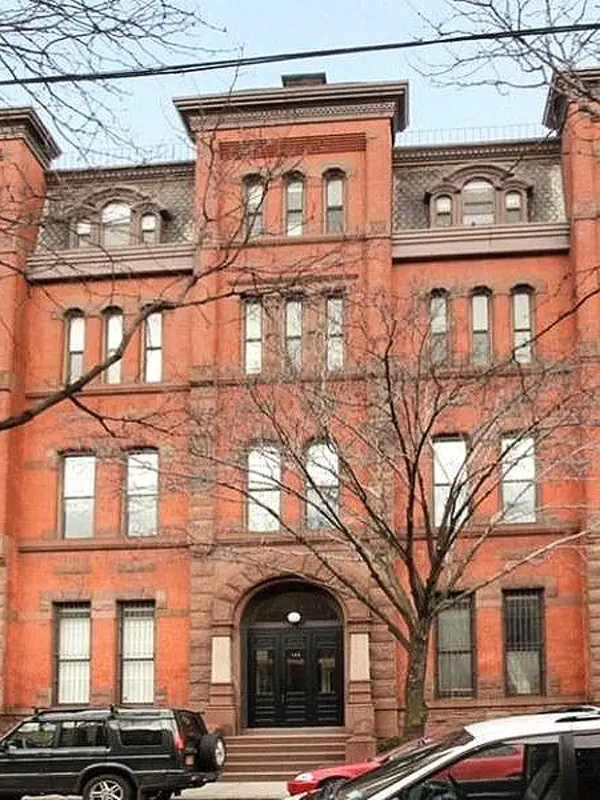

This very handsome building at 143 South 8th Street between Bedford and Driggs avenues in Brooklyn was erected in 1892 as the Long Island Business College and designed by William G. Gaynor. It was built by Henry C. Wright, the founder of Wright’s Business College in Williamsburg, Brooklyn, in 1873.
It was designated an official New York City landmark September 17, 2013.
According to its designation report by the Landmarks Preservation Commission, “Among the school’s students was John F. Hylan, who would go on to serve as New York City’s mayor from 1918 to 1925.”
In 1920, the college itself was sold and moved to a different Brooklyn location, and in 1922, the building reopened as Public School 166.
“During its time as the Long Island Business College, the building’s assembly hall hosted the meetings and lectures of the Brooklyn Philosophical Association, one of the country’s leading freethought organizations during the period that has come to be known as freethought’s ‘golden age.’ Many prominent speakers lectured there, including anarchist Emma Goldman, labor leader and socialist Eugene V. Debs, suffragist Carrie Chapman Catt, future mayor William J. Gaynor, sitting Mayor John Purroy Mitchel, and anti-vice crusader Anthony Comstock,” the designation report continued.
“In 1943, it became an early home of the Beth Jacob Teachers Seminary of America, serving as both a teachers’ academy and as a day and boarding high school for girls. After World War II, the building, which is a significant landmark in the development of South Williamsburg’s Jewish community, became a magnet for hundreds of young Holocaust survivors who sought to further their studies,” the report added.
In March of 1943, the City sold it to Beth Jacob Teachers Seminary of America, which was then located at 505 Bedford Avenue.
The Bais Yaakov, or Beth Jacob, educational movement was established in Krakow in 1917 by Sarah Schenirer. A seamstress who had educated herself in Jewish scripture and philosophy, Schenirer founded the first Bais Yaakov school seeking to “fight the spread of secularization and acculturation among Orthodox women - who until then had received no formal Jewish education.” By 1937, Bais Yaakov schools had been established throughout Poland as well as in Czechoslovakia, Romania, and Lithuania, and teacher training seminaries were operating in Krakow and Czernowitz (now the Ukrainian city of Chernivtsi).
In America in the mid-1930s, no schools above the elementary school level existed specifically for Orthodox girls. Williamsburg parents and religious leaders were concerned that their daughters were being secularized by the public schools, where they participated in “social activities that clashed with Orthodox proprieties.” The Beth Jacob Teachers Seminary of America, the first such school in the country, was founded in Williamsburg in 1938 by Vichna Kaplan, née Eisen, a star student of Schenirer’s at the Krakow seminary who had recently married the American-born rabbi Boruch Kaplan. The goal of the seminary, which also functioned as a high school for boarding and day students, was to supply teachers for a network of Bais Yaakov schools in the U.S. The first American Bais Yaakov school wasestablished in Williamsburg; by 1945, others were open in Bensonhurst, Borough Park, Brownsville, East New York, and Brighton Beach.
The seminary remained in the Long Island Business College building until the mid-1960s, when it moved to 132 South 8th Street. The function of the building between this time and 1980, when it was listed as United Talmudical Academy Torah Vyirah, is unclear.
In 1984, Beth Jacob Seminary sold the building to a group of artists including Lars Cederholm, Doug Ohlson, Hiroshi Kariya, Bernard Kirschenbaum, and Susan Weil, who soon converted it into loft spaces.
It has 10 condominium apartments.
Bottom Line
This handsome 19th Century building has been a business school, a public school, a seminary and a “free-thought” center and now is a condominium apartment building and an attractive garden with a koi pond.
Description
The building combines the Romanesque Revival and Second Empire styles, and incorporates elements of other contemporary styles. It has rough-faced brownstone trim, a five-part façade with central tower and end pavilions, slate-covered mansards, and a convex roof with square cap.
“The use of Second Empire style features,” the designation report maintained, “elevated the neighborhood public school, giving it an air of cosmopolitan modernity recalling the grand buildings and palaces of Napoleon III’s newly redesigned Paris; the mansarded public school with its tower vied with the church steeple as the most prominent element in the skyline of the 19th-century Brooklyn neighborhood.
Its symmetrical five-part main façade with end pavilions and central tower crowned by a convex mansard roof with a square cap, and its slate-covered mansards crowning the second and fourth bays, are representative of the Second Empire style, while its rough-faced brownstone trim, curved bricks, and round-arch-headed openings are characteristic of the Richardsonian Romanesque, which was then at the height of its popularity in Brooklyn. The finely carved ornament within the spandrels of the main-entrance arch, as well as the columnar third-story mullions and carved rosettes at the second through fourth floors, are classical in influence and typical of the contemporaneous Queen Anne style. Italianate influence is seen in the grouped round-arch-headed dormer windows crowned by heavy moldings....[It has a] brownstone stoop with cheek walls; round-arch-headed main-entrance opening flanked by pilasters with granite shafts and brownstone foliate capitals with egg-and-dart moldings; rough-faced brownstone main-entrance arch with pointed voussoirs and classical foliate ornament within the arch spandrels; historic main-entrance door frame with twisted engaged columns, classical denticulated transom bar, and wood transom frame; bluestone basement sill; square-headed basement window openings; rough-faced brownstone basement with smooth lintel course; smooth-faced brownstone first-story sill course; rough-faced brownstone blocks flanking main entrance, first story of end pavilions, heads and sills of first-story windows, and central second-story bay; square-headed first-story window openings crowned by pointed flat arches; round-arch-headed second-story window openings with rough-faced brownstone keystones and springers on central bay; square-headed third-story windows with classical columnar mullions and egg-and-dart moldings on central bay; window openings crowned by brownstone arches with chamfered corners at fourth story of central bay and third story of second and fourth bays; segmental-arch-headed window openings with rough-faced brownstone springers at second story of outer bays; segmental-arch-headed window openings with rough-faced brownstone springers and keystones at second story of second and fourth bays; round-arch-headed windows with rough-faced brownstone springers at third and fourth stories of outer bays; rough-faced brownstone panels and brownstone corbel blocks decorated with carved rosettes at second through fourth stories; mansard roofs faced with octagonal slate shingles crowning second and fourth bays; tripartite round-arch-headed dormer windows crowned by heavy moldings; corbelled brick coursing crowning central and end bays; denticulated cornices; convex mansard roof with square cap crowning central bay.”
Amenities
The building owns an adjacent parking lot and has a landscaped garden with koi pond, a laundry room and basement storage.
Apartments
Apartment 3A is a four-bedroom duplex with an 10-foot-square entry foyer that leads to a 27-foot-wide living/dining room with an open corner kitchen and a 26-foot-wide studio on the main level with two bedrooms on the upper level.
Apartment 4 is a three-bedroom unit with a 13-foot-wide entry foyer that leads to a 25-foot-wide living room with an angled wall and a 17-foot-wide dining room with open corner kitchen. The unit also has a separate, 22-foot-long storage space.
Apartment 2A is a two-bedroom unit with a large entry foyer that leads to a large gallery that leads to a living room with 15-foot-high ceilings with an open corner kitchen with 6-burner Garland stove and a loft bedroom. Tin ceilings and deep crown moldings surround the tall South, East and West windows.
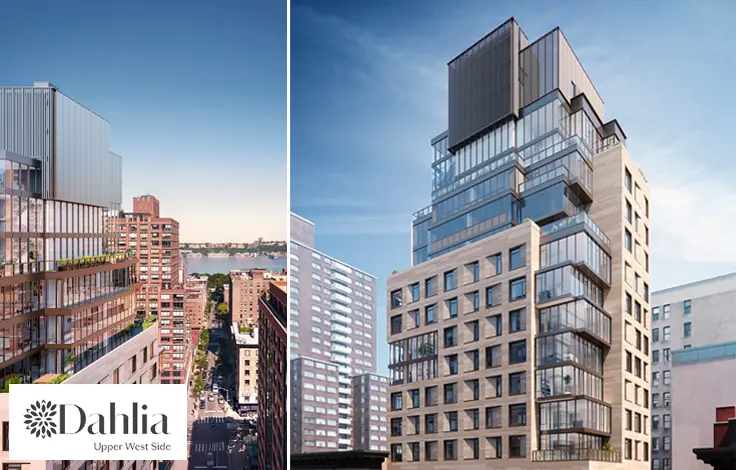
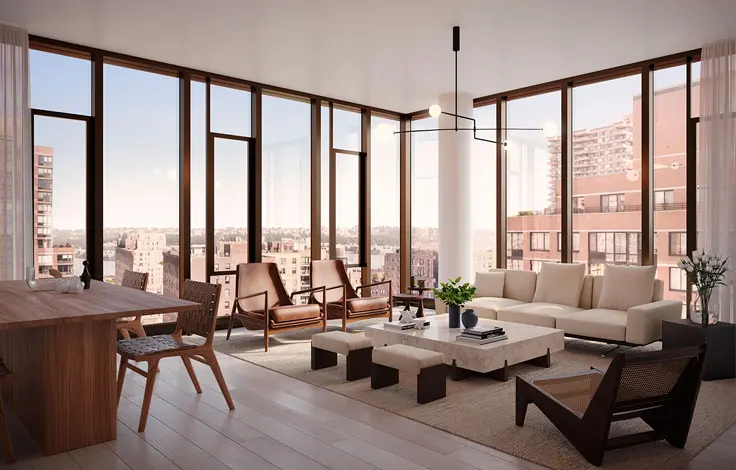
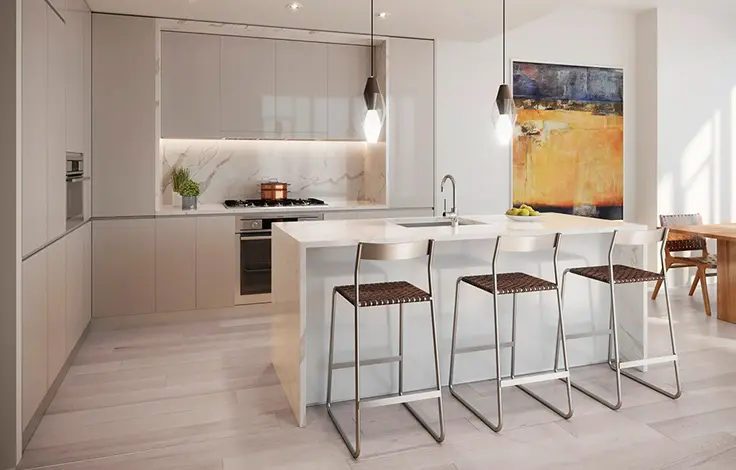
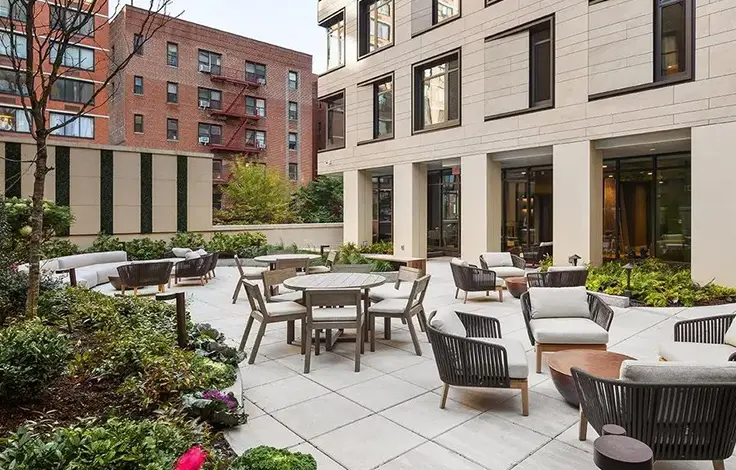
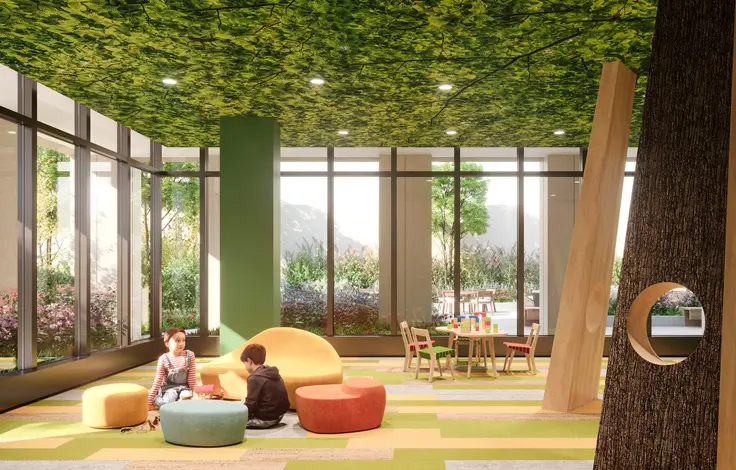
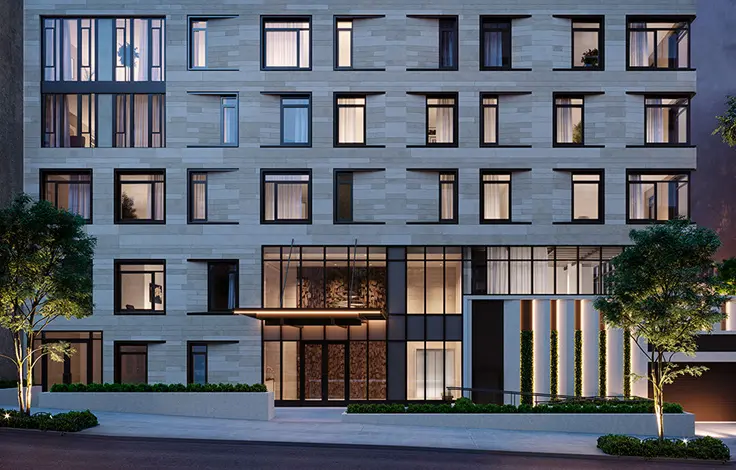
 6sqft delivers the latest on real estate, architecture, and design, straight from New York City.
6sqft delivers the latest on real estate, architecture, and design, straight from New York City.
